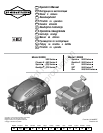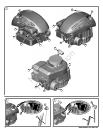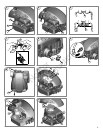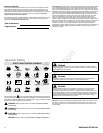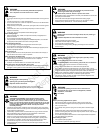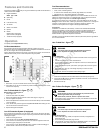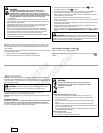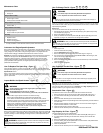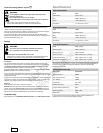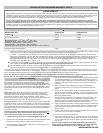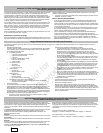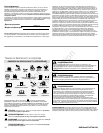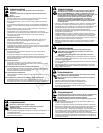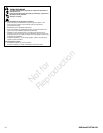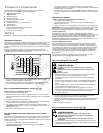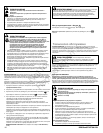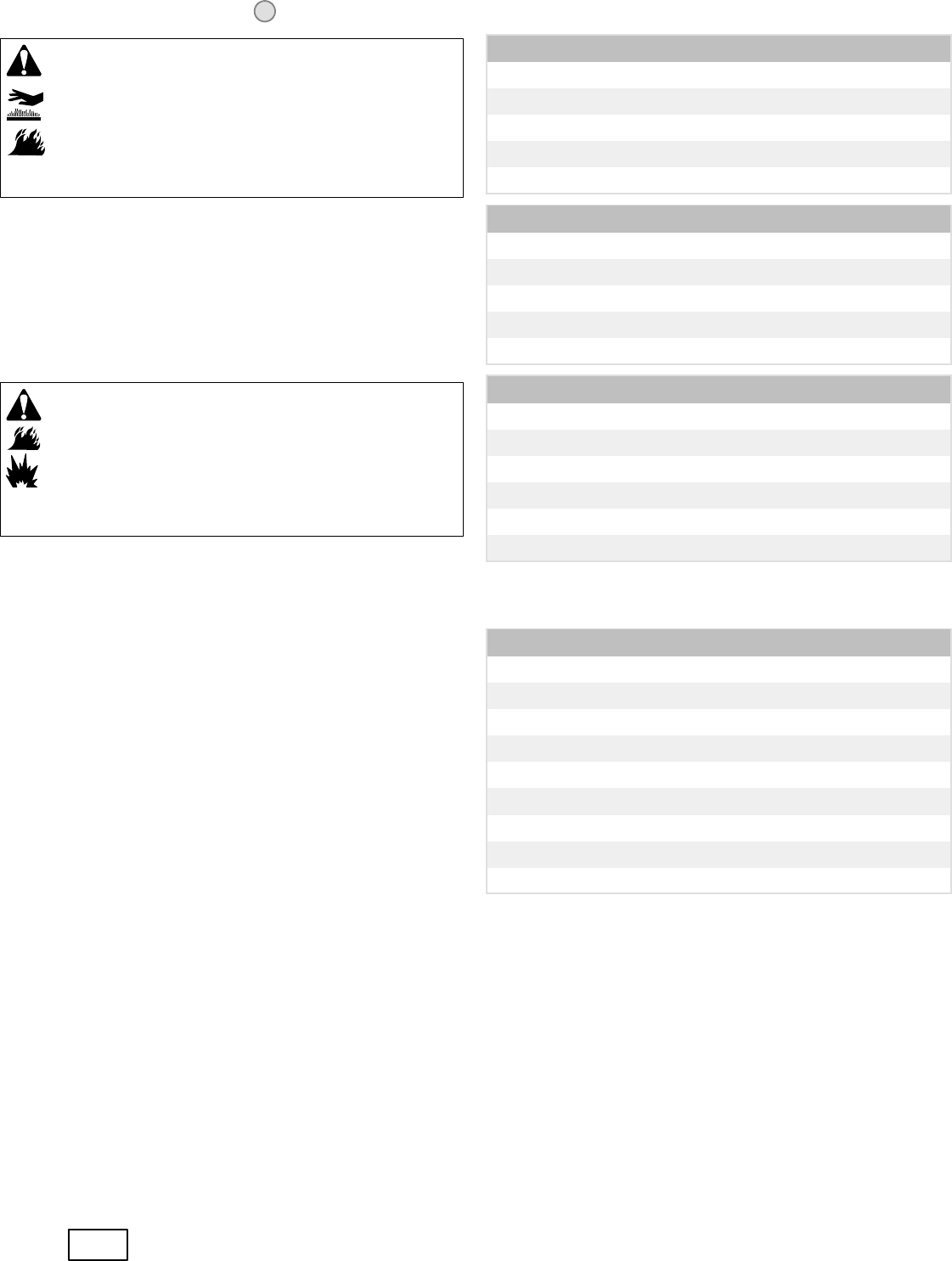
9
en
Clean Air Cooling System - Figure
13
Running engines produce heat. Engine parts, especially muffler,
become extremely hot.
Severe thermal burns can occur on contact.
Combustible debris, such as leaves, grass, brush, etc. can catch fire.
WARNING
Allow muffler, engine cylinder and fins to cool before touching.
Remove accumulated debris from muffler area and cylinder area.
NOTICE: Do not use water to clean the engine. Water could contaminate the fuel
system. Use a brush or dry cloth to clean the engine.
This is an air cooled engine. Dirt or debris can restrict air flow and cause the engine to
overheat, resulting in poor performance and reduced engine life.
Use a brush or dry cloth to remove debris from the finger guard (A). Keep linkage,
springs and controls ( B) clean. Keep the area around and behind the muffler (C)freeof
any combustible debris (Figure 13).
Storage
WARNING
Fuel and its vapors are extremely flammable and explosive.
Fire or explosion can cause severe burns or death.
When Storing Fuel Or Equipment With Fuel In Tank
Store away from furnaces, stoves, water heaters or other appliances that have
pilot lights or other ignition sources because they can ignite fuel vapors.
Fuel System
Fuel can become stale when stored over 30 days. Stale fuel causes acid and gum
deposits to form in the fuel system or on essential carburetor parts. To keep fuel fresh,
use Briggs & Stratton Advanced Formula Fuel Treatment & Stabilizer, available
wherever Briggs & Stratton genuine service parts are sold.
For engines equipped with a FRESH START
®
fuel cap, use Briggs & Stratton FRESH
START
®
available in a drip concentrate cartridge.
There is no need to drain gasoline from the engine if a fuel stabilizer is added according
to instructions. Run the engine for 2 minutes to circulate the stabilizer throughout the fuel
system before storage.
If gasoline in the engine has not been treated with a fuel stabilizer, it must be drained into
an approved container. Run the engine until it stops from lack of fuel. The use of a fuel
stabilizer in the storage container is recommended to maintain freshness.
Engine Oil
While the engine is still warm, change the engine oil.
NOTICE: Store the engine level (normal operating position). If the engine is tipped for
storage, the f uel tank must be empty and the spark plug side must be up. If the fuel
tank is not empty and if the engine is tipped in any other direction, it may be difficult to
start due to oil or gasoline contaminating the air filter and/or the spark plug.
Troubleshooting
Need Assistance? Go to BRIGGSandSTRATTON.COM or call 1-800-233-3723 in USA.
Specifications
Engine Specifications
Model 90000
Displacement 9.02 ci (148 cc)
Bore 2.562 in (65.08 mm)
Stroke 1.750 in (44.45 mm)
Oil Capacity 18 -- 20 oz (0.54 -- 0.59 L)
Engine Specifications
Model 100000
Displacement 9.67 ci (158 cc)
Bore 2.562 in (65.08 mm)
Stroke 1.875 in (47.65 mm)
Oil Capacity 18 -- 20 oz (0.54 -- 0.59 L)
Tune-up Specifications *
Model 90000, 100000
Spark Plug Gap 0.030 in (0.76 mm)
Spark Plug Torque 180 lb-in (20 Nm)
Armature Air Gap 0.006 - 0.010 in (0.15 - 0.25 mm)
Intake Valve Clearance 0.005 - 0.007 in (0.13 - 0.18 mm)
Exhaust Valve Clearance 0.007 - 0.009 in (0.18 - 0.23 mm)
* Engine power will decrease 3.5% for each 1,000 feet (300 meters) above sea level and
1% for each 10 F(5.6 C) above 77 F(25 C). The engine will operate satisfactorily at
an angle up to 15. Refer to the equipment operator’s manual for safe allowable
operating limits on slopes.
Common Service Parts n
Service Part Part Number
Standard Air Filter 698369
High Capacity Air Filter 797819
Oil -- SAE 30 100005
Fuel Additive 5041, 5058
Resistor Spark Plug 796112
Long Life Platinum Spark Plug 5062
Spark Plug Wrench 89838, 5023
Spark Tester 19368
n We recommend that you see any Briggs & Stratton Authorized Dealer for all
maintenance and service of the engine and engine parts.
Not for
Reproduction



